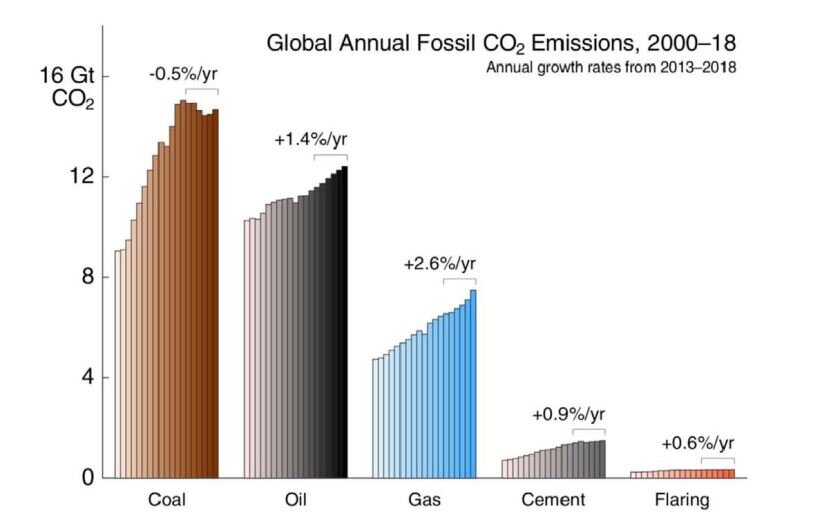Oregon Says Bye to Coal-Fired Energy for Good
The Boardman coal plant. Photo courtesy of PGE.
By Haley Mast
On Oct. 15 Portland General Electric (PGE) permanently shut down Oregon's last coal-fired power plant located in Boardman. The plant was built in 1980 and ever since has caused alarm for environmentalists and gained the attention of regional media due to it being one of the largest single sources of greenhouse gas emissions in the state.
Location of Boardman’s coal plant
The plant was also one of its largest energy producers, chipping in 518 megawatts of the company’s overall 3.092, enough to power. It was replaced with the new 440-megawatt, natural gas-fired Carty Generating Station that is sited next to the now-defunct Boardman Plant.
The Carty plant uses a highly-efficient G-class turbine manufactured by Mitsubishi and is capable of producing enough low-cost electricity to serve about 300,000 residential customers, according to company literature.
“Our customers are counting on us to deliver a clean energy future,” PGE President and CEO Maria Pope said. “PGE’s Boardman closure is a major step on our path to meeting Oregon’s greenhouse gas emissions reduction goals and transforming our system to reliably serve our customers with a cleaner, more sustainable energy mix,” she said.
“The Intergovernmental Panel on Climate Change tells us that we have a decade to make significant progress to curb greenhouse gas emissions in our atmosphere. Our future must be powered by clean energy,” Pope said.
Boardman’s closure has been factored into PGE’s resource plans since 2010, so the company could take steps to ensure there’ll be enough electricity to continue reliable electric service to customers after the plant’s shutdown.
Emissions growth rats shown annually for 2013-2018. in more recent years coal is leading in highest annual CO2 emissions. Photo courtesy of Electricity Fuel Resources.
NGO Efforts
Many non-profit organizations have advocated for the shut down of the plant. The Sierra Club created the Beyond Coal campaign in efforts of promoting renewable energy for a cleaner and healthier future.
"Ending coal burning in the Northwest creates more business opportunities for affordable, reliable renewable energy, which is bringing economic improvement and cleaner air and water to Oregon and Washington," said Bill Corcoran, Western Region Director for the Sierra Club’s Beyond Coal campaign.
Health
Air pollution from coal-fired power plants is linked with asthma, cancer, heart and lung ailments, and neurological problems explained a study conducted by the Clean Air Task Force.
"Americans are standing up for their children’s health by fighting the coal industry’s grip on our country, plant-by-plant," said Mary Anne Hitt, Director of the Sierra Club’s Beyond Coal campaign.
Columbia Kiverkeep who partnered with the Sierra Club on the matters said “PGE Boardman emits about 4 million tons of greenhouse gases a year and another 25,500 tons of pollutants, primarily sulfur dioxide and nitrogen oxides.”
Sulfur dioxide and nitrogen oxide closely relate to respiratory illness, infection, and asthmas. Long-term exposure to high levels of these emissions can cause chronic lung disease.
Environmental achievement
Steve Corson with PGE said the closure will eliminate about 2 million tons of greenhouse gas emissions that were coming from the plant every year.
Climate change is coal's most serious, long-term, global impact. Chemically, coal is mostly carbon, which, when burned, reacts with oxygen in the air to produce carbon dioxide, a heat-trapping gas. The consequences of global warming include drought, sea-level rise, flooding, extreme weather, and species loss.
The 2011 Clean Air lawsuit supported by Sierra Club, Columbia Riverkeeper, Friends of Columbia Gorge, and others was settled. Under the Boardman agreement Portland General Electric (the owner and operator of the Boardman Plant) has agreed to pay $2.5 million into a fund managed by the Oregon Community Foundation – a neutral third party organization – which will provide:
$1 million for habitat protection and environmental restoration in the Columbia River Gorge;
$625,000 for habitat protection and restoration in the Blue Mountains, Hells Canyon, and Wallowa Mountains;
$500,000 for local clean energy projects, such as solar panels on houses; and
$375,000 for community-based efforts to reduce air pollution.
Pushing for renewable energy
One notable new renewable power resource that will help serve PGE customers and contribute to a healthy economy in the Morrow County community going forward is Wheatridge – a facility PGE is building with NextEra Energy Resources just south and east of Boardman, with 300 megawatts of wind and 50 megawatts of solar, augmented by 30 megawatts of battery storage.
The Wheatridge wind farm is currently in the final stages of construction and will be online this year. The solar and storage resources will be constructed in 2021 and are expected to be online before the end of next year.
Some Boardman employees will continue with the plant during 2021 to conduct environmental cleanup and ready the facility for demolition and removal beginning in 2022, while others will retire, move to other positions with PGE, or leave the company
"Oregon is among those states showing that we can do better than the dirty business of coal," said Corcoran. "A healthier and brighter future is arriving in America."
Want to see more content like this?
Take our poll to tell us what kind of content you’d like to see more of.




